第20章 Flowers(4)
It would be interesting, had we time, to enter more fully than it is now possible into the laws of composition and detail formulated by the various flower-masters of this period, showing, as they would, the fundamental theories which governed Tokugawa decoration.
We find them referring to the Leading Principle (Heaven), the Subordinate Principle (Earth), the Reconciling Principle (Man), and any flower arrangement which did not embody these principles was considered barren and dead.They also dwelt much on the importance of treating a flower in its three different aspects, the Formal, the Semi-Formal, and the Informal.The first might be said to represent flowers in the stately costume of the ballroom, the second in the easy elegance of afternoon dress, the third in the charming deshabille of the boudoir.
Our personal sympathies are with the flower-arrangements of the tea-master rather than with those of the flower-master.The former is art in its proper setting and appeals to us on account of its true intimacy with life.We should like to call this school the Natural in contradistinction to the Naturalesque and Formalistic schools.
The tea-master deems his duty ended with the selection of the flowers, and leaves them to tell their own story.Entering a tea-room in late winter, you may see a slender spray of wild cherries in combination with a budding camellia; it is an echo of departing winter coupled with the prophecy of spring.Again, if you go into a noon-tea on some irritatingly hot summer day, you may discover in the darkened coolness of the tokonoma a single lily in a hanging vase; dripping with dew, it seems to smile at the foolishness of life.
A solo of flowers is interesting, but in a concerto with painting and sculpture the combination becomes entrancing.Sekishiu once placed some water-plants in a flat receptacle to suggest the vegetation of lakes and marshes, and on the wall above he hung a painting by Soami of wild ducks flying in the air.Shoha, another tea-master, combined a poem on the Beauty of Solitude by the Sea with a bronze incense burner in the form of a fisherman's hut and some wild flowers of the beach.One of the guests has recorded that he felt in the whole composition the breath of waning autumn.
Flower stories are endless.We shall recount but one more.
In the sixteenth century the morning-glory was as yet a rare plant with us.Rikiu had an entire garden planted with it, which he cultivated with assiduous care.The fame of his convulvuli reached the ear of the Taiko, and he expressed a desire to see them, in consequence of which Rikiu invited him to a morning tea at his house.On the appointed day Taiko walked through the garden, but nowhere could he see any vestige of the convulvus.
The ground had been leveled and strewn with fine pebbles and sand.
With sullen anger the despot entered the tea-room, but a sight waited him there which completely restored his humour.On the tokonoma, in a rare bronze of Sung workmanship, lay a single morning-glory--the queen of the whole garden!
In such instances we see the full significance of the Flower Sacrifice.
Perhaps the flowers appreciate the full significance of it.They are not cowards, like men.Some flowers glory in death--certainly the Japanese cherry blossoms do, as they freely surrender themselves to the winds.Anyone who has stood before the fragrant avalanche at Yoshino or Arashiyama must have realized this.For a moment they hover like bejewelled clouds and dance above the crystal streams;then, as they sail away on the laughing waters, they seem to say:
"Farewell, O Spring! We are on to eternity."